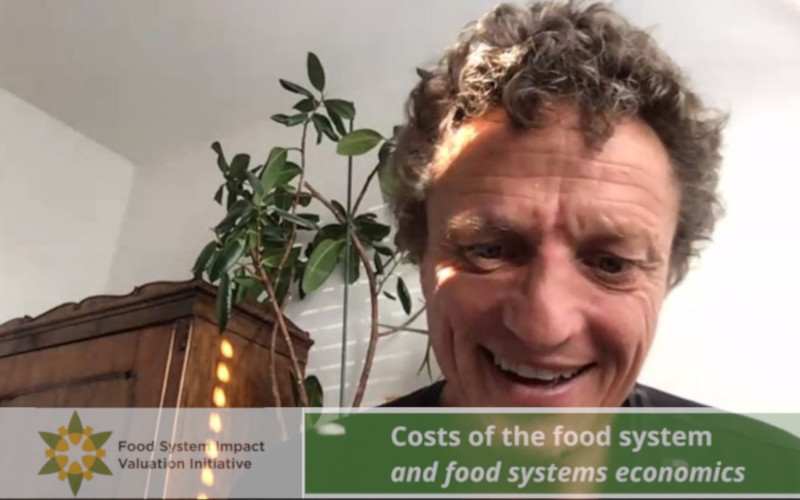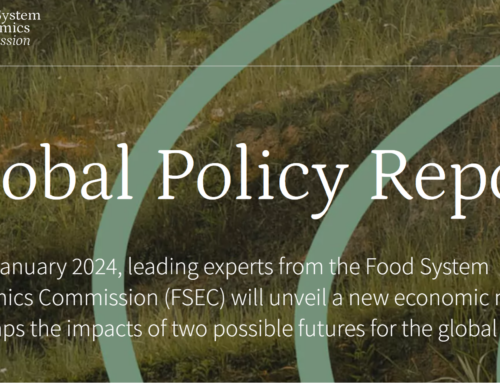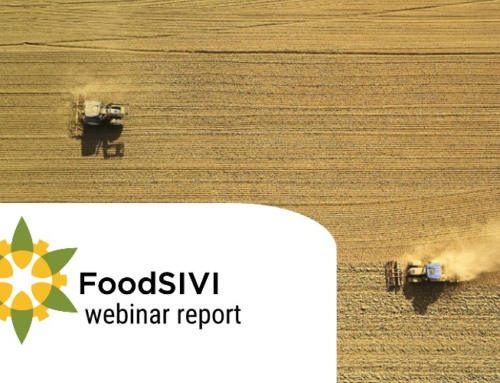FoodSIVI Webinar on the Costs of the Food System
The true costs of the impacts of the current food system as well as the need for an economic conversation about food system transformation were highlighted in the recent Food System Impact Valuation (FoodSIVI) webinar. The event, which took place on 21 September 2020, featured leading experts on academic, civil, and business fronts.
The food system is the number two global contributor to climate change, the number one global contributor to biodiversity loss, the number one land user, is the number one global contributor to preventable disease and death due to malnutrition in all forms, it involves the number one manufacturing sector across many advanced economies, and involves the primary livelihood of the world’s poor. There are few direct economic incentives, however, for the largely private sector to operate in a way that reduces its environmental, social, and human impact.
A better system leads to better outcomes
First to speak was Caterina Ruggeri Laderchi from the Food and Land Use Coalition (FOLU). She highlighted the costs of externalities and inefficiencies in the current food system versus a better food system as calculated in FOLU’s first global report Growing Better: Ten Critical Transitions to Transform Food and Land Use. The better food system resulted in better environmental, health, development outcomes with resulting economic differences in the order of US$5.7 trillion annually by 2030 (2019 $US dollars). The FOLU report estimates investment needs (US$300-350 billion annually by 2030) and business opportunities (US$4.5 trillion annually by 2030) in realising a better food system. Caterina closed on the exciting development of the formation of the Food Systems Economic Commission.
Professor Tim Benton, of Chatham House, highlighted, in the context of the UK, the existing value provided by the food system in comparison to the scale of the externalities. Tim examined a range of sources and figures for additional costs, including nutrient and GHG emissions, air pollution, biodiversity loss, food safety, and human impacts such as mental health and dietary ill-health. Comparing costs and benefits naively is difficult, and we need to understand the effect of an economic transition to a different food system with lower impact on livelihoods, the rest of the economy, and food security.
The economic impact of malnutrition
Tim spoke subsequently on a recent Chatham House report examining the productivity costs to businesses of malnutrition in 19 developing countries. A model developed with management consultancy Vivid Economics connected malnutrition to physical and cognitive development and capacities, and a broad range of factors which could result in absenteeism and reduced workforce capacity across 13 sectors. Underweight and obesity costs were broadly of the same order, contributing in combination to a potential 0.4-2.9% loss of GDP of those countries. Anaemia in the female workforce and agricultural and similar labour occupations was also a considerable cost. Tim closed with the importance to governments to understand the economics of the food system and its impacts, and a call to expand research in this area.
Pathways to a better food system
Economic projections of alternative, lower impact, food systems rely heavily on modelling and scenarios of pathways to sustainable land-use over the coming decades. Professor Michael Obersteiner, Director of Oxford’s Environmental Change Institute, led the FABLE consortium, whose 2019 report examined country level pathways to achieving agricultural and food systems meeting joint environmental, health and economic targets. Michael described the FABLE consortium and its process, and the reliance on scenarios, international political processes and national policy targets, and constraints produced by land-use. A dashboard allowed countries to iteratively work together to set targets and see progress to global targets.
A potential boost to global GDP
Steven Lord, leader of the FoodSIVI project in the ECI, summarised some takeaways from the discussion and from FoodSIVI’s first report. One takeaway was that, given existing estimates, transforming the food system will likely boost global GDP compared to continuing the current food system. If you’re not managing the global food system, you’re not managing the global economy – this is the same argument made by Nobel prize winners such as Joseph Stiglitz about the climate crisis.
Steven also discussed the uncertainty and potential risk inherent in the costs of the food system. Positive correlations between climate and biodiversity impacts, health impacts, and inequality increase the chances of very high global impacts. Echoing Tim’s comments, outside of carbon, economic work on food system impacts needs more research, and FoodSIVI is looking to do this and connect its work with financial criteria for investment in lowering impact in the food sector.
Pricing impact into earnings
Technical problems prevented Salim Rahmani from Danone joining the webinar. The following is a brief summary from his intended talk. Salim will speak in March 2021 at the next FoodSIVI webinar.
Salim conveyed that Danone made several commitments to manage its carbon emissions and is a signatory to the “Business Ambition for 1.5°” pledge alongside other food companies. Importantly, in February 2020, the Company introduced the cost of carbon as a component to Danone’s earnings per share. Including costs from Danone’s activities, such as positive and negative carbon externalities in the company’s total value chain, assists investors in making better investment decisions for the long-term. Pricing impacts from externalities directly into the company’s financials makes a link that has been missing in the conversation between investors and corporates. Salim indicated that the next step is to integrate health externalities, to provoke a more holistic dialogue with stakeholders on the impact of food systems on People and the Planet.
Caterina, Tim and Michael’s talks were followed by about 45 minutes of Q&A, including discussion on the inclusion of aquaculture, the difficulty of assessing health costs, and more. The full video of the webinar, with closed captions, is available.
Want to hear about future FoodSIVI events? Sign up here.







